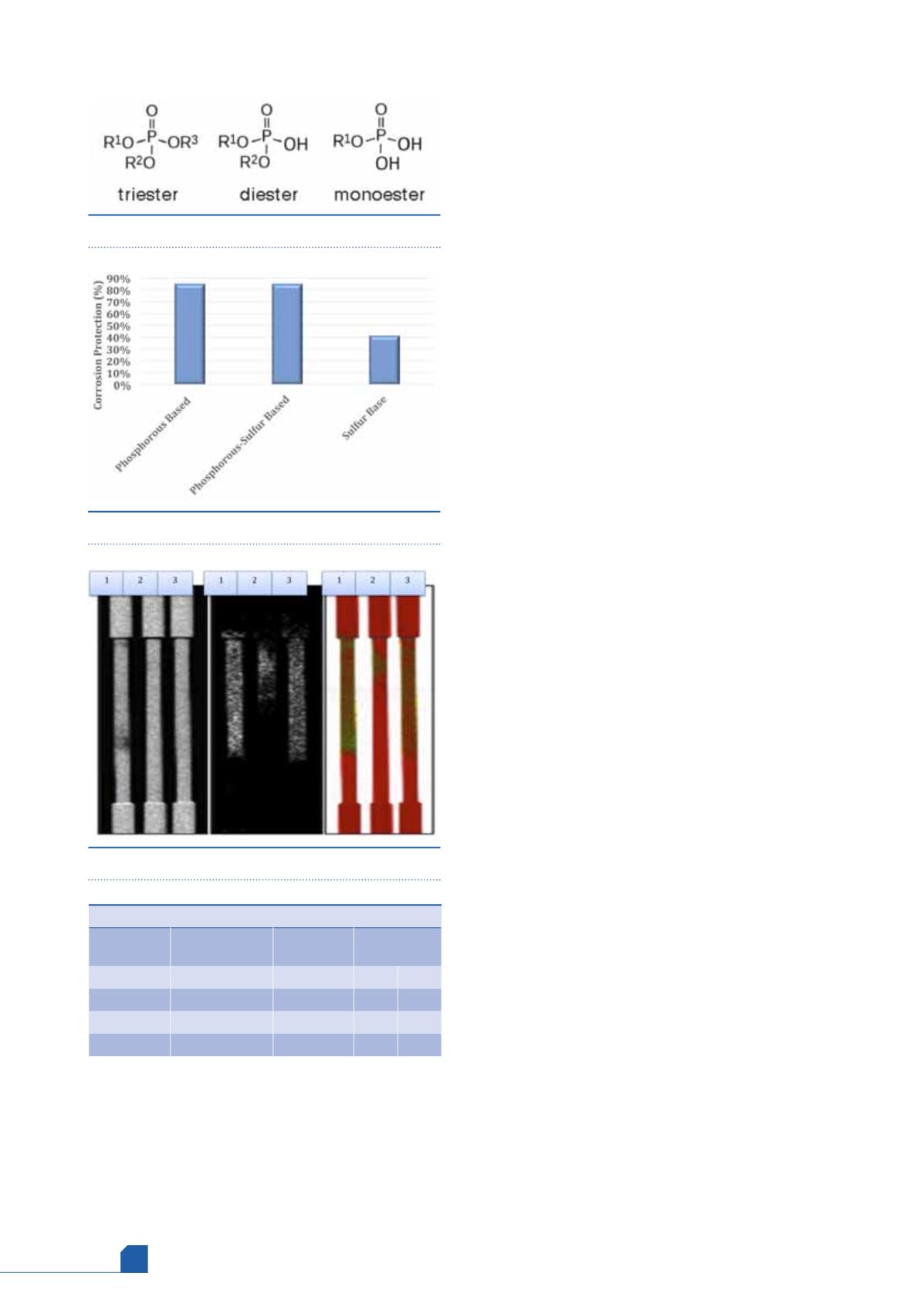
March
2017
HYDROCARBON
ENGINEERING
64
interferes with the reaction of naphthenic acids with
metallurgies composed of iron and iron alloys. Instead of
forming the hydrocarbon-soluble iron naphthenate,
insoluble iron phosphate is produced, thus protecting the
iron from metal surface leaching away. The presence of
more than one active site on the phosphorus atom
enables one molecule to react with more than one iron
molecule. This interaction eventually results in the
formation of a tenacious passivation layer on the metal
surface, which prevents naphthenic acid attack on the
metal.
1
The most common form of these phosphate
ester-based products are a mixture of mono- and
di-esters. These forms readily activate at stream
temperatures where naphthenic acids are observed to
be the most aggressive. This is the basis of most of the
successful naphthenic acid inhibitors deployed to date
in the industry. Other materials have been evaluated in
the laboratory with lower performance results, and
besides the use of reactive polysulfides they have not
been commercially deployed. Reactive polysulfides
have limited use in high temperature naphthenic acid
corrosion control and whilst they can provide some
protection against naphthenic acid, they are of a lesser
application capability compared to phosphorous-based
products on an equivalent basis (Figure 2).
2
Recent in-house studies on the relative
performance of a mono-/di-ester and a tri-ester-based
product has demonstrated the additional functional R
group on a tri-ester can hinder several key performance
parameters that can impact the effectiveness of these
types of inhibitors. Three of the most important
characteristics are laydown efficiency, the ability to
passivate and protect in a dynamic situation, and
persistency of the barrier layer
Laydown efficiency
For products to be effective, they need to be able to
react with the metal surfaces when they are injected
into the process stream. Using an Alcor Hot Liquid
Process Simulator (HLPS), the effectiveness of the
laydown between the mono-/di-ester and the tri-ester
was demonstrated. The Alcor HLPS is a single-phase,
laminar flow tube-in-shell heat exchanger that can be
used to simulate deposition or surface reaction effects
of components in crude oil and intermediate
products. The fluid is pumped across a heated tube
under controlled conditions, material in the fluid may
react with the surface of the heated tube and fouling
deposits may also be deposited on the heater tube
surface. The effect of the deposits on the heat
exchanger efficiency is measured by monitoring the
fluid temperature as fluid exits the heat exchanger. The
absolute amount of deposits on the heater tube is also
measured.
Several HLPS runs were conducted with the
following conditions:
Temperature: 680°F (360°C).
Flow rate: 2 ml/min.
Duration: 4 hours.
The heater rods were removed and analysed using
X-ray fluorescence microscopy (XRFM) analysis. This
analysed the amount of phosphorous that reacted with
the metal rod surface. The more the phosphorous was
detected, the higher laydown.
Figure 3 is a picture of the heater rods from the HLPS
and Table 1 provides the XRFM quantitative results. Figure 3
Table 1.
HLPS heater rod results
Rod number Description
Chemical
dosage
Results (%)
Fe P
1
Mono-/di-ester 1 wt%
88.6 11.4
2
Tri-ester
1 wt%
96.7 3.3
3
Mono-/di-ester 0.05 wt% 87.1
12.9
Figure 1.
Esters of phosphoric acid.
Figure 2.
Corrosion protection.
Figure 3.
HLPS heater rod.








